WordPress.com has launched a newsletter product just in time to capture those escaping Gumroad’s price increase and editors displaced by Revue shutting down. Newsletters, which were already booming as a communication tool in recent years, have become more critical than ever, as the uncertainty around Twitter has people scrambling to find reliable ways to stay connected.
WordPress.com (and Jetpack users) have had the ability to send published posts to email subscribers for years. This isn’t usually marketed as a newsletter (as you can see below) but functions in the same way.
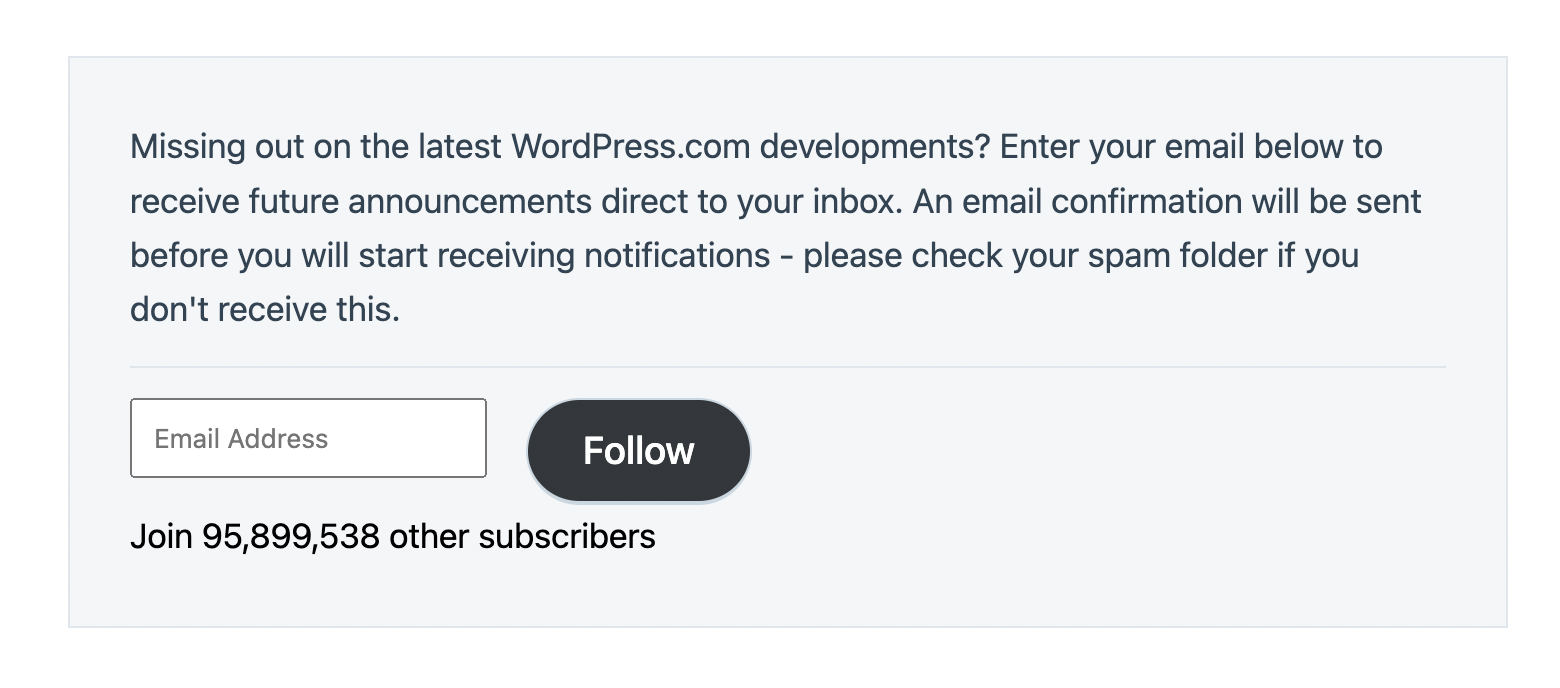
WordPress.com Newsletter is a new streamlined product for scheduling and publishing newsletters using WordPress. It uses the same underlying infrastructure as subscribing to sites via email, offering users unlimited email subscribers. During setup, newsletter creators can import up to 100 subscribers from other newsletter services by uploading a CSV file.
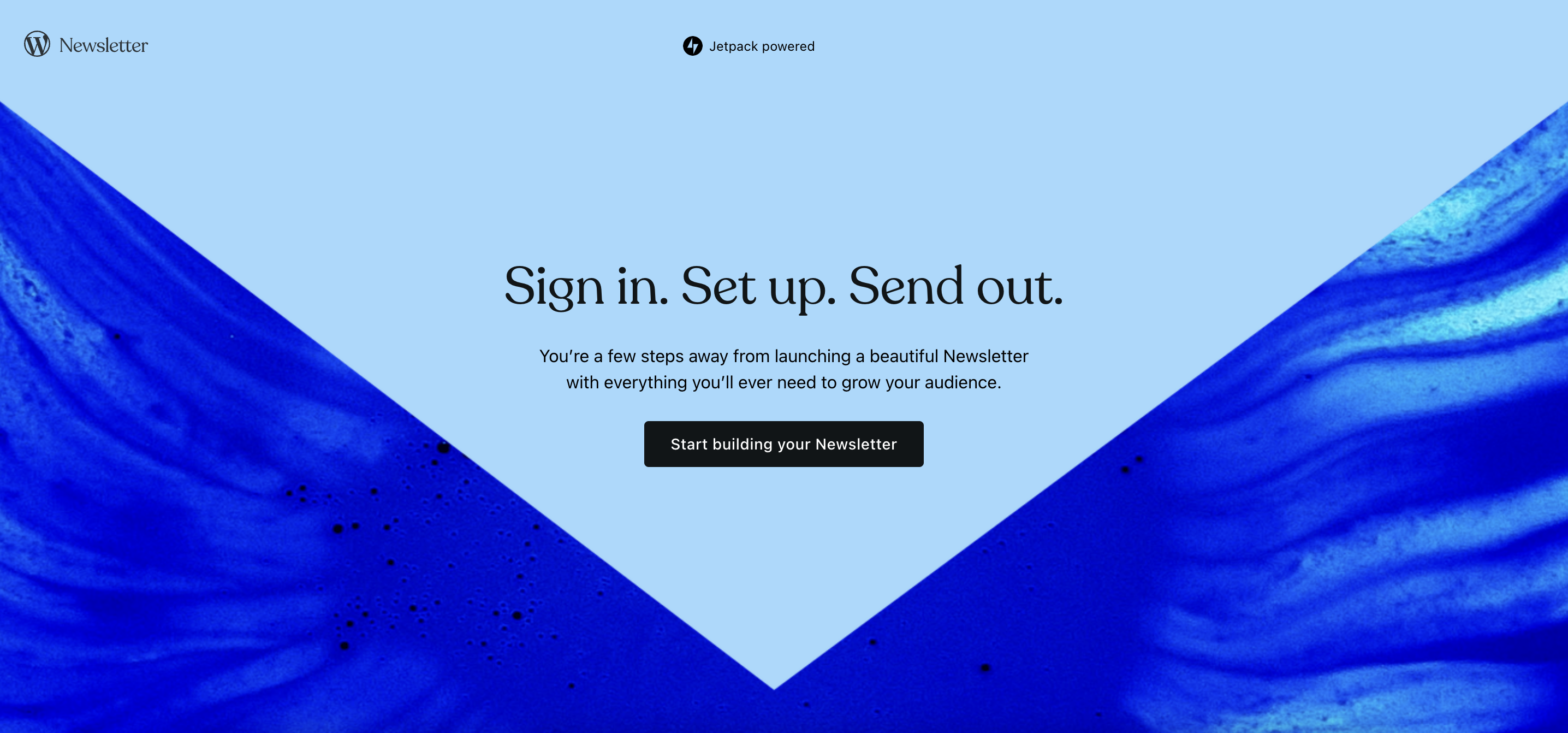
A theme designed for newsletters is put in place with additional newsletter-focused block patterns for the Subscribe box. Users can take advantage of the Site Editor to further customize the site’s background, site icon, and accent colors. This type of website showcases the versatility of the block editor, as newsletter creators can quickly design their own unique websites, without editing any code.
With all the activity in the newsletter product space lately, I had to give myself a tour of WordPress.com’s new product to see how it stacks up to creating campaigns with other dedicated email services. In the first part of the setup process, users will upload a logo, specify a site name and description, and select a color.
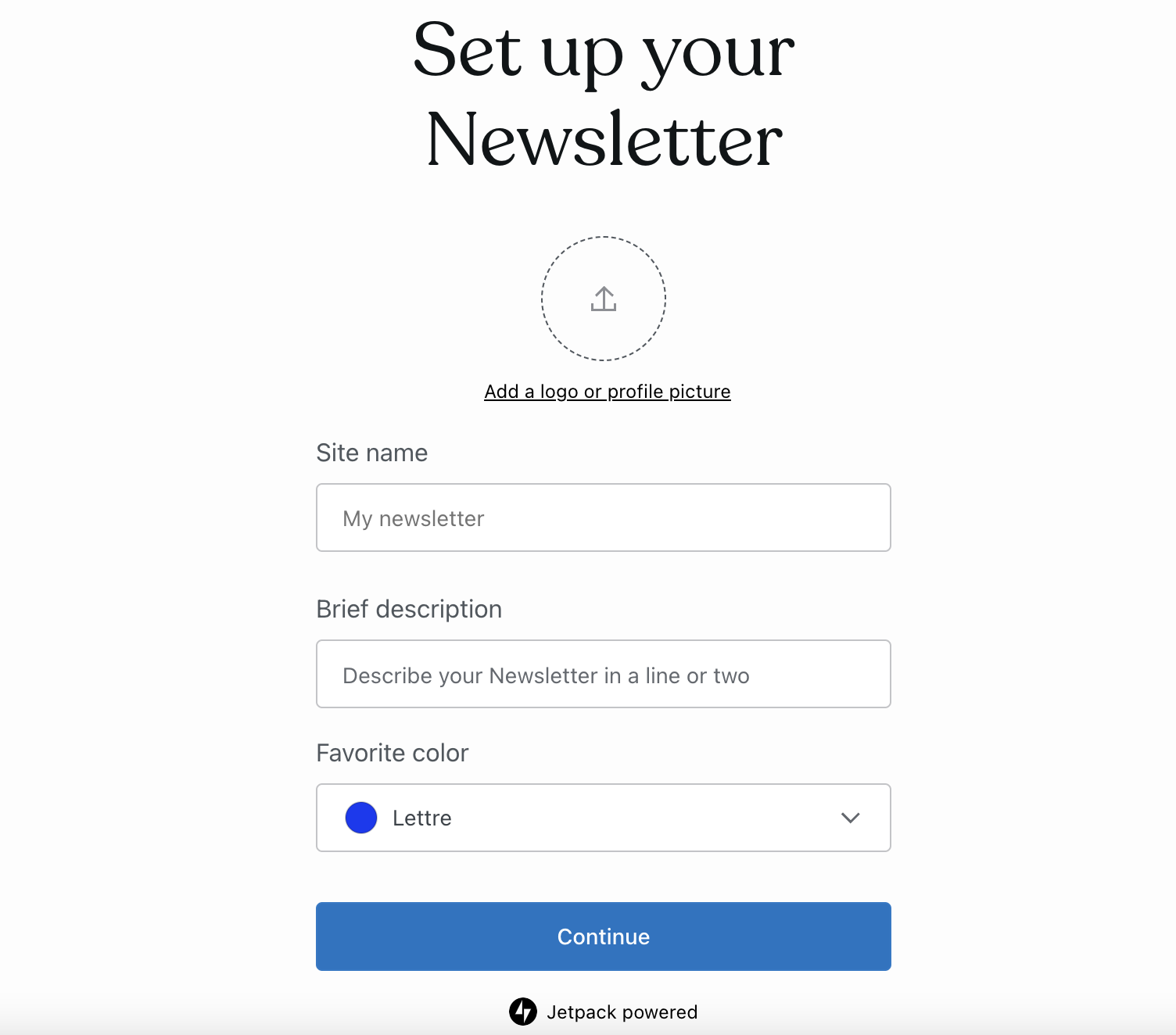
The next section displays pricing options with a plain link at the top for the free plan. Paid plans are ad-free and allow users to send unlimited emails. In the future, the premium plan will allow users to monetize their newsletters in various ways, such as selling subscriptions or collecting donations.
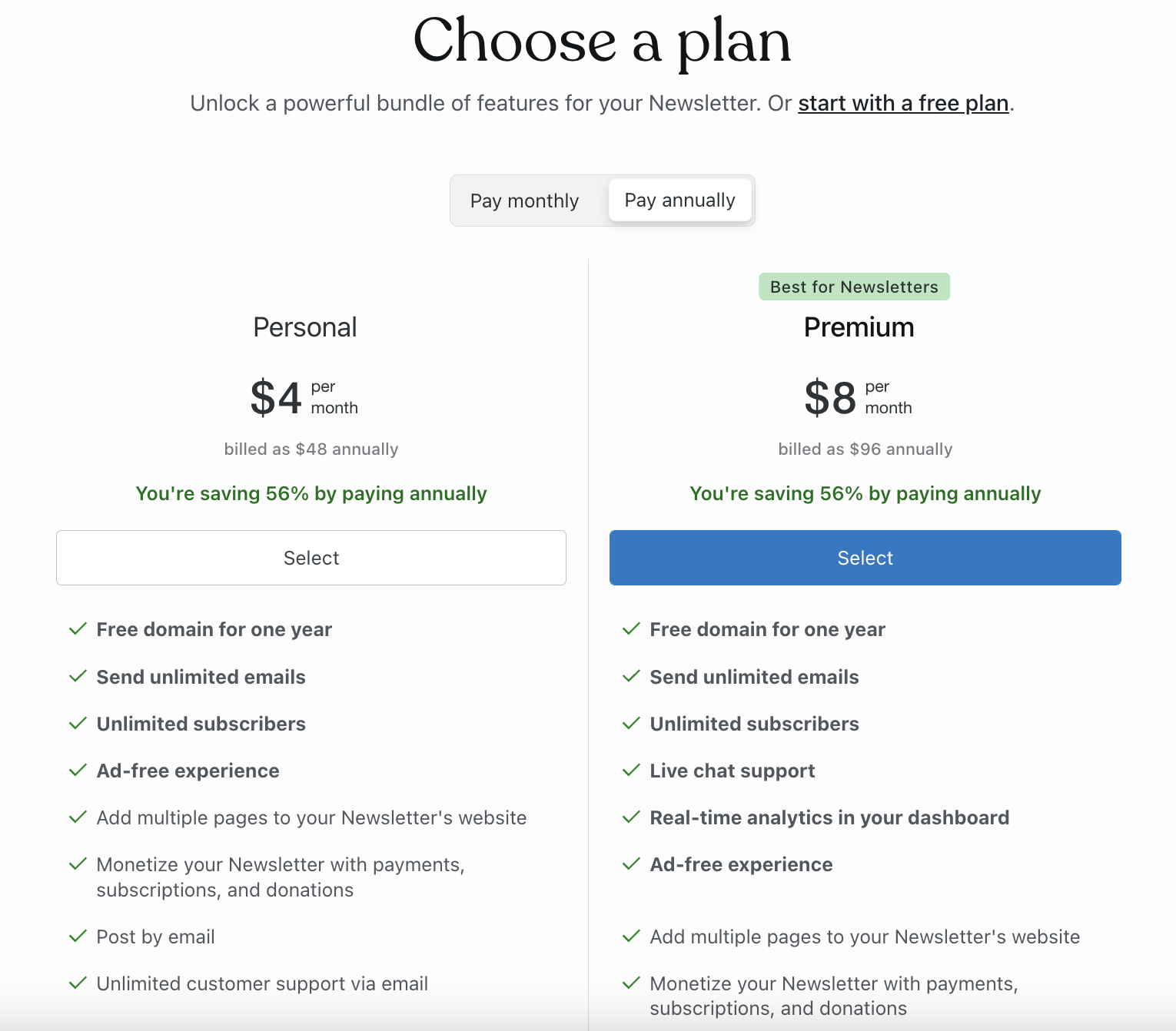
After selecting a plan and free or paid domain name, users have the opportunity to upload up to 100 emails from other newsletter services. I selected the free plan, so that number may be unlimited with the paid plans. The site setup is fairly quick, as it puts the default theme in place, and users are encouraged to start writing. It’s a simple flow entirely geared towards publishing newsletters. Depending on the readiness of the post, newsletter authors can have their first issue landing in subscribers’ inboxes in minutes.
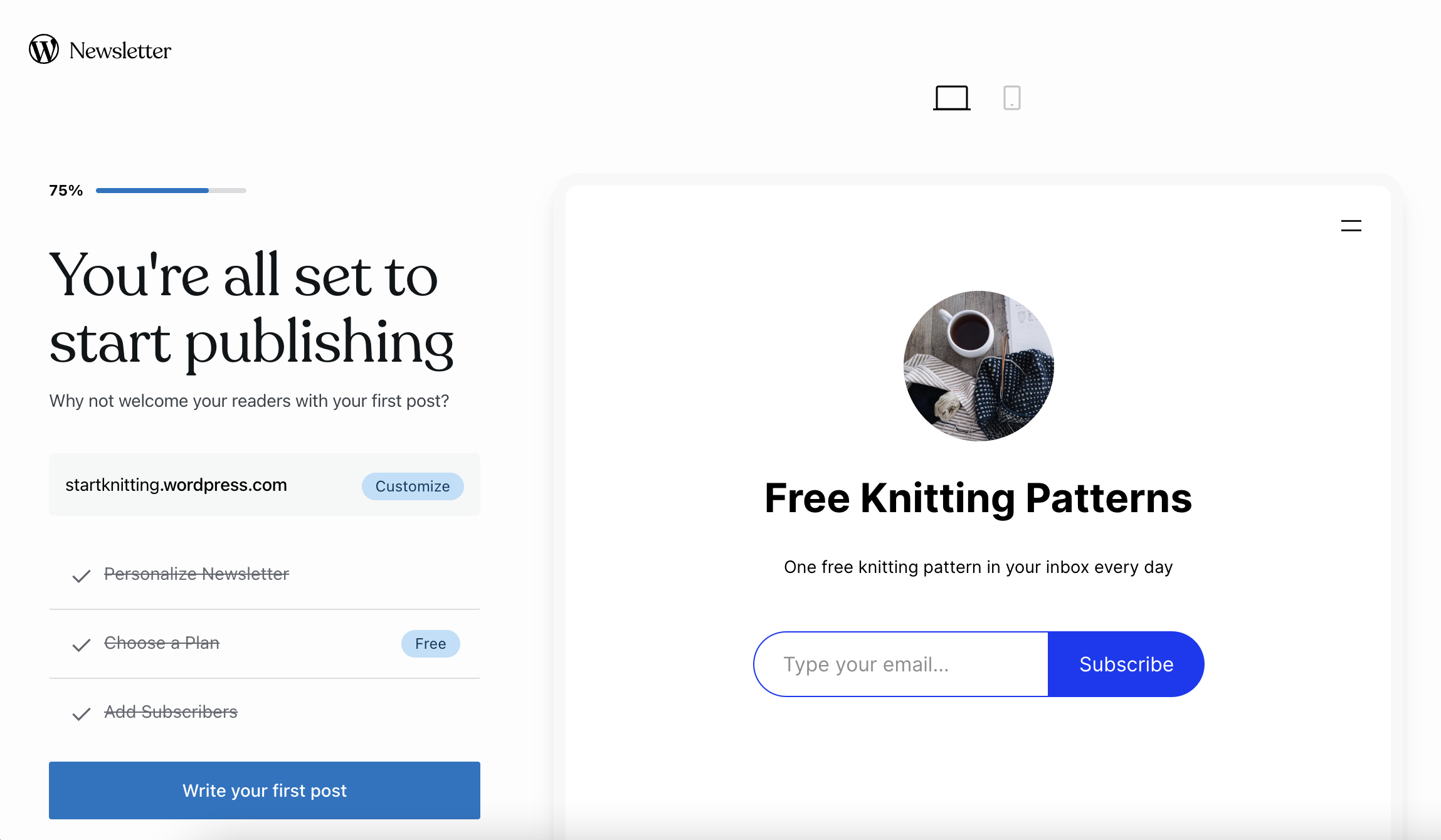
The default newsletter site theme doesn’t come with additional style variations but users can easily edit the templates to expand, reduce, or further customize what is shown on the frontend.
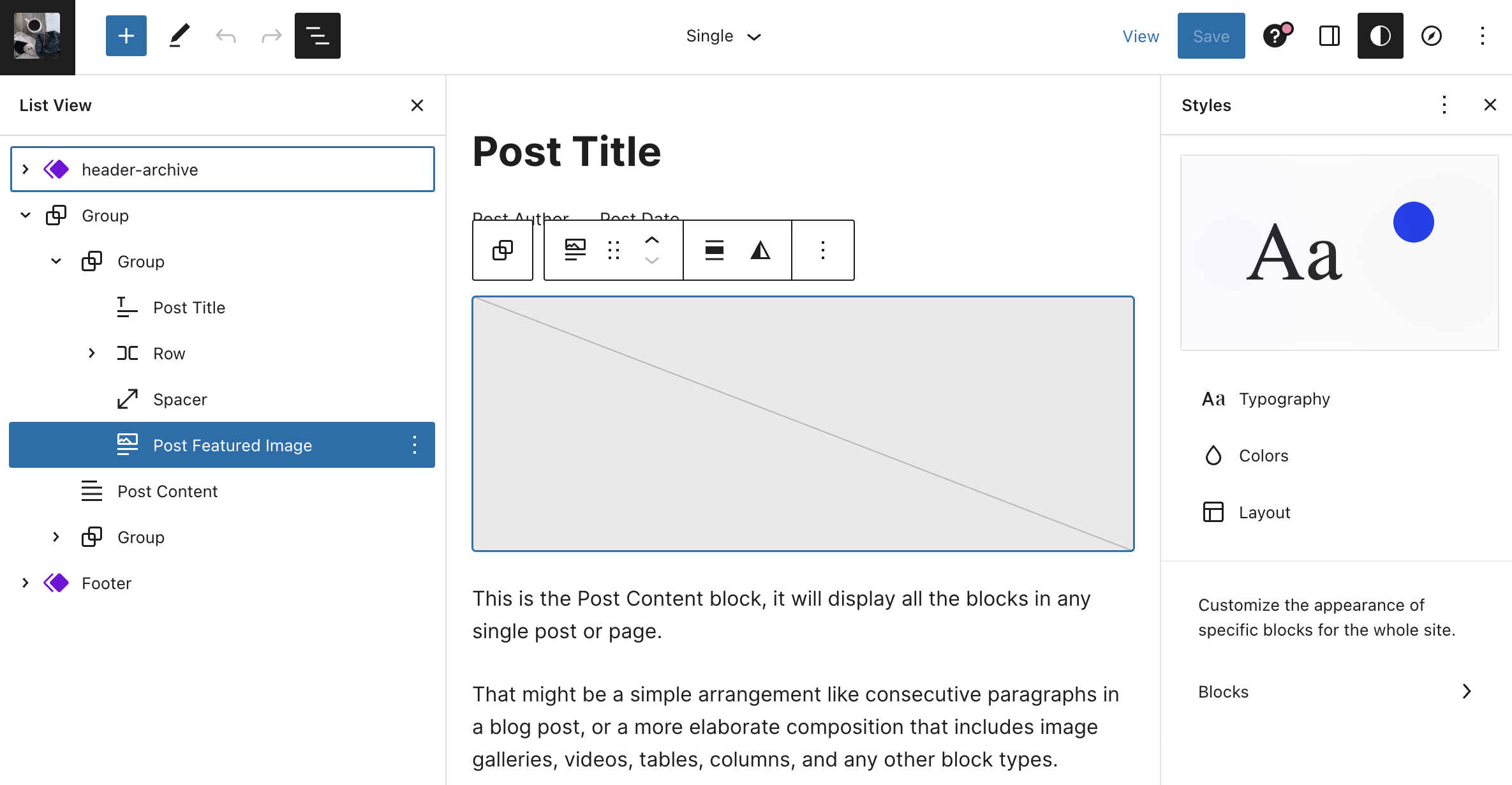
The default theme is very minimalist but looks nice out of the box on both desktop and mobile. The subscribe form is front and center and recent posts, or newsletter “issues,” show up underneath with a featured image.
If you are familiar with WordPress, using the block editor is likely far easier than any newsletter campaign editor out there, as these tend to be clunky and limited in options. Publishing directly from WordPress.com also eliminates the need to copy the content over into a newsletter service and reformat it for email, a problem that services like Newsletter Glue have set out to solve for self-hosted WordPress sites.
if you are a subscriber of IndieWeb principles, one of the most important considerations in launching a newsletter is that you own your own data and have the opportunity to practice POSSE (Publish (on your) Own Site, Syndicate Elsewhere). WordPress.com’s new offering makes it effortless to follow this workflow for newsletter publishing.
One bonus feature, which is lacking with major newsletter service providers, is that subscribers can reply to the email to leave a comment on the published post, furthering the public conversation around each issue of the newsletter.
Although WordPress.com has experience sending millions of emails at scale, the newsletter product’s pricing and sales copy doesn’t mention anything about deliverability rates. This is a major selling point for people coming from other services which haven’t performed as well on deliverability. There is also no comparison chart showing the limitations of the free account, which may be an important consideration for those who are just testing the waters.
For those who are not hosting their sites at WordPress.com, there are a myriad of diverse plugins for self-hosted WordPress that can make newsletter publishing a seamless process. It requires knowing which ones to install, setup, and configure. For non-technical publishers, WordPress.com’s newsletter product is the most approachable entry point to WordPress-based newsletter publishing that exists on the market right now. If the company can add the monetization features fast enough, this product has the potential to become a major contender among newsletter services jostling to capture the creator economy.
source https://wptavern.com/wordpress-com-launches-newsletter-product
Comments
Post a Comment